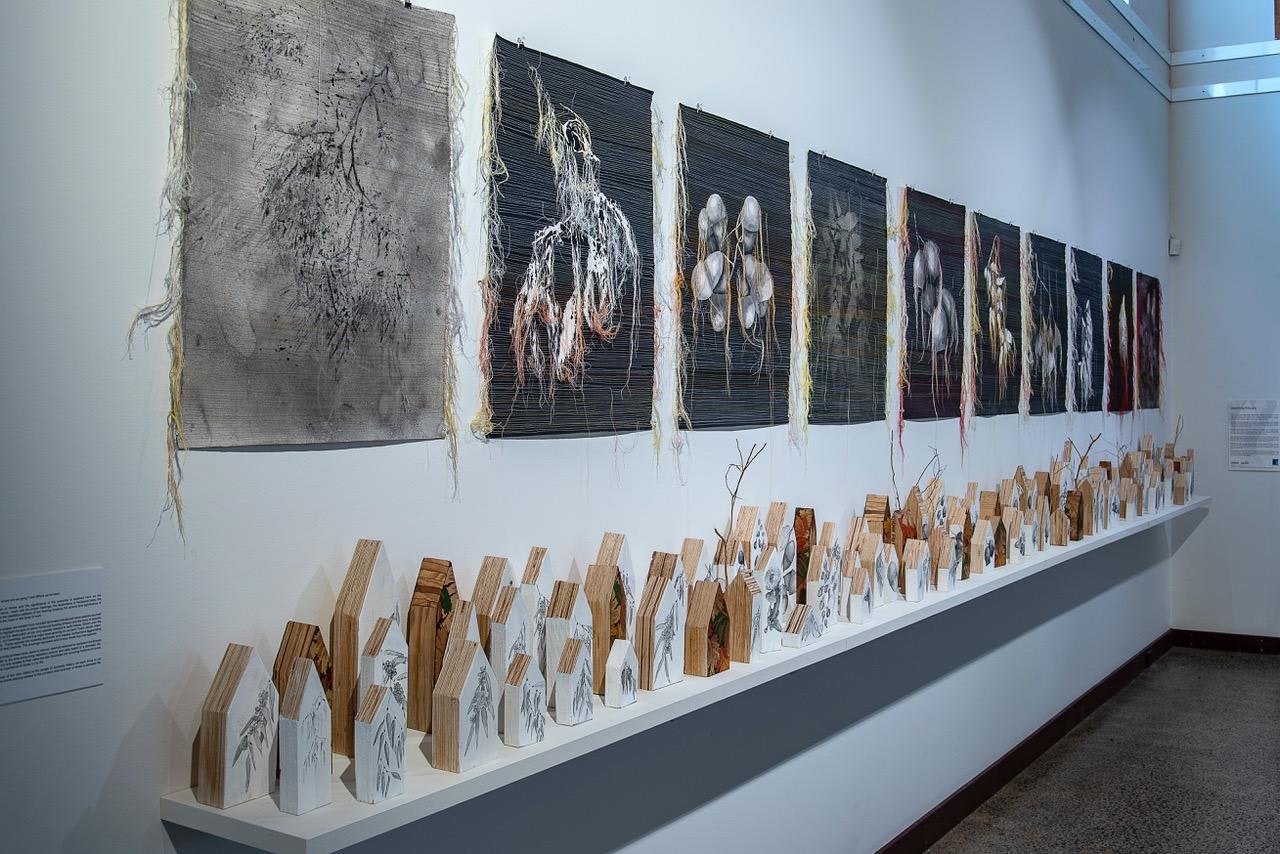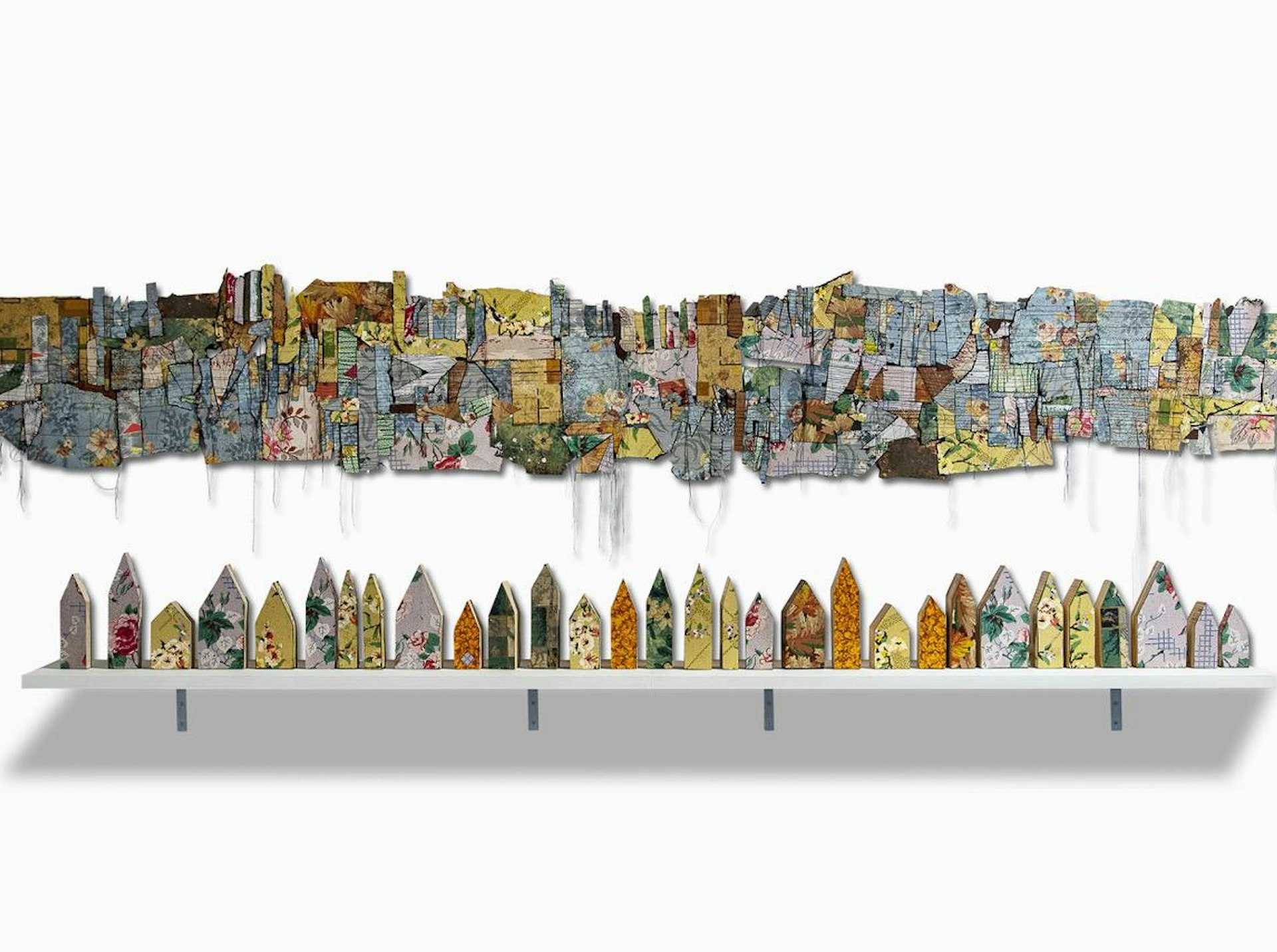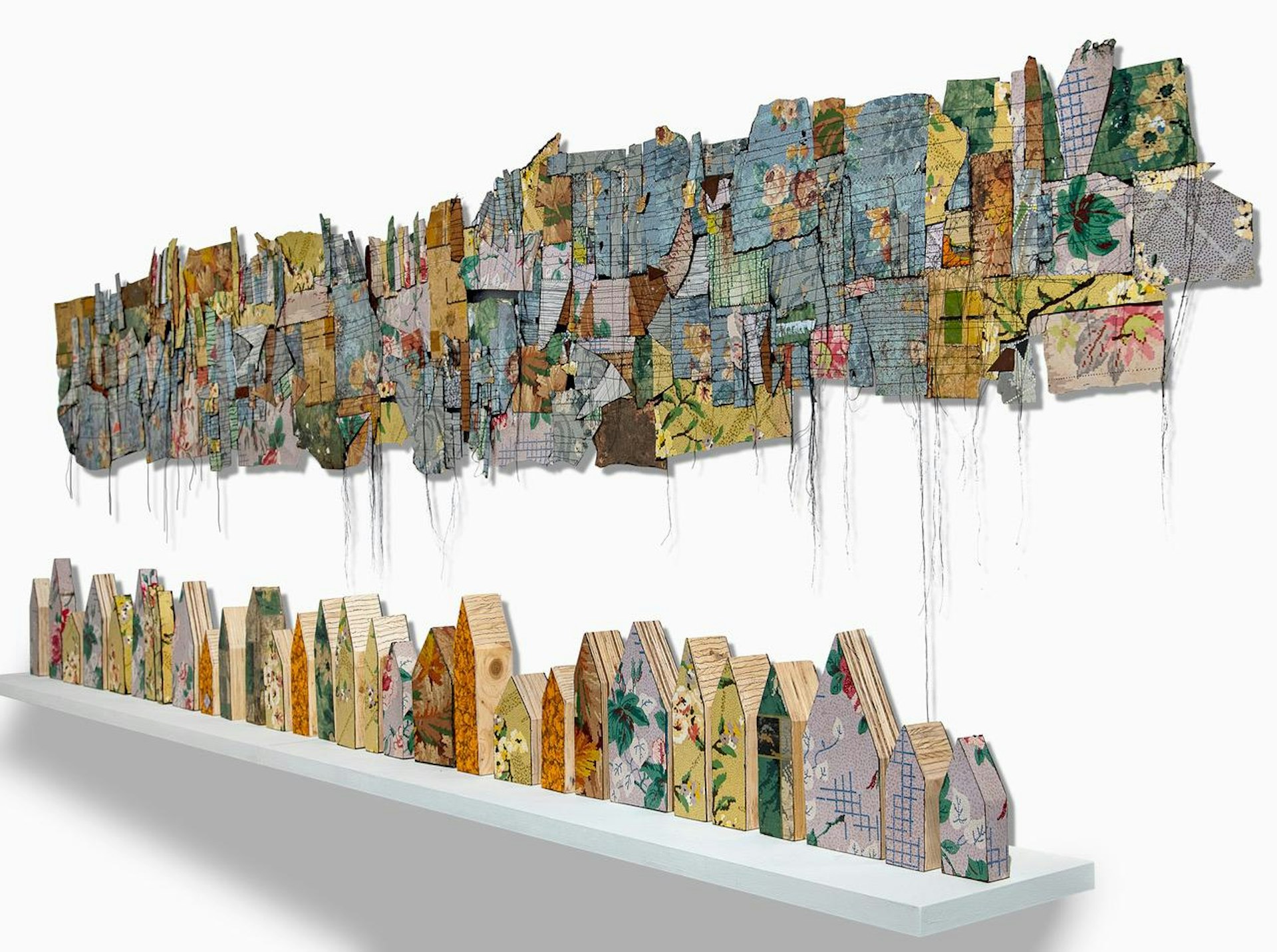2021 | Dwelling Rituals
A satellite exhibition of the Indian Ocean Craft Triennial and held in the Holmes à Court Gallery - Vasse Felix from the 26th of September 2021 - 23rd of January 2022.
Dwelling Rituals explored home and the significance of the everyday. It examined how small gestures, repeated actions, daily habits and the materials and objects of home each hold meanings significant to our being in the world. This was explored through a selection of works from artists working across the South West and Great Southern regions of Western Australia.
ARTIST STATEMENT
The mass-production of Home and the significance of the everyday is explored here via the sculptural shape of home, each with its unique markings, the illustration of hardwood trees, the rhythmic sewing and the repetitive patterns of lino floor covering to imitate the actions and significance of the everyday. This is the heart of this body of work.
The repetitive house shapes are created from recycled laminated introduced wood species sourced from building skips to reference the lack of native hardwood building timbers; the irony of scarcity of resources caused by the destruction of the very species needed to build Home. Drawn onto the face of these homes, our Dwellings, are the five major trees growing on my land: Tuart, Jarrah, Marri, Peppermint, Banksia. These species routinely destroyed and wasted, furthermore aggravating the climatic effects of land clearing. The drawings represent and honour those five tree species.
The illustration of the fruits of these trees, sewn in colours, carefully selected as representing the flowers of each species refer to the time consuming repetitive actions and daily habits of a domestic life. The intense sewing not only speaks to their value but also illustrates the recurring rhythms of Home. It is a reminder of the importance of the ritual in my life.
The use of tiny pieces of Lino also refers to the scraps of domestic history we each bring to our household lives. The marks bearing witness to the constant wear and tear of rituals in domestic life.
Helen Seiver




